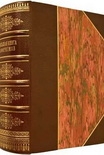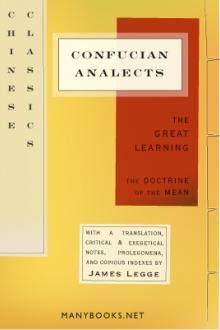Myths and Legends of China E. Werner (best reads of all time .TXT) 📖

- Author: E. Werner
Book online «Myths and Legends of China E. Werner (best reads of all time .TXT) 📖». Author E. Werner
Both the sun and the moon are worshipped by the Page 177Government in appropriate temples on the east and west sides of Peking.
Various Star-gods
Some of the star-gods, such as the God of Literature, the Goddess of the North Star, the Gods of Happiness, Longevity, etc., are noticed in other parts of this work. The cycle-gods are also star-gods. There are sixty years in a cycle, and over each of these presides a special star-deity. The one worshipped is the one which gave light on the birthday of the worshipper, and therefore the latter burns candles before that particular image on each succeeding anniversary. These cycle-gods are represented by most grotesque images: “white, black, yellow, and red; ferocious gods with vindictive eyeballs popping out, and gentle faces as expressive as a lump of putty; some looking like men and some like women.” In one temple one of the sixty was in the form of a hog, and another in that of a goose. “Here is an image with arms protruding out of his eye-sockets, and eyes in the palms of his hands, looking downward to see the secret things within the earth. See that rabbit, Minerva-like, jumping from the divine head; again a mud-rat emerges from his occipital hiding-place, and lo! a snake comes coiling from the brain of another god—so the long line serves as models for an artist who desires to study the fantastic.”
Shooting the Heavenly Dog
In the family sleeping-apartments in Chinese houses hang pictures of Chang Hsien, a white-faced, long-bearded man with a little boy by his side, and in his hand a bow and arrow, with which he is shooting the Heavenly Page 178Dog. The dog is the Dog-star, and if the ‘fate’ of the family is under this star there will be no son, or the child will be short-lived. Chang Hsien is the patron of child-bearing women, and was worshipped under the Sung dynasty by women desirous of offspring. The introduction of this name into the Chinese pantheon is due to an incident in the history of Hua-jui Fu-jên, a name given to Lady Fei, concubine of Mêng Ch’ang, the last ruler of the Later Shu State, A.D. 935–964. When she was brought from Shu to grace the harem of the founder of the Sung dynasty, in A.D. 960, she is said to have preserved secretly the portrait of her former lord, the Prince of Shu, whose memory she passionately cherished. Jealously questioned by her new consort respecting her devotion to this picture, she declared it to be the representation of Chang Hsien, the divine being worshipped by women desirous of offspring. Opinions differ as to the origin of the worship. One account says that the Emperor Jên Tsung, of the Sung dynasty, saw in a dream a beautiful young man with white skin and black hair, carrying a bow in his hand. He said to the Emperor: “The star T’ien Kou, Heavenly Dog, in the heavens is hiding the sun and moon, and on earth devouring small children. It is only my presence which keeps him at bay.”
On waking, the Emperor at once ordered the young man’s portrait to be painted and exhibited, and from that time childless families would write the name Chang Hsien on tablets and worship them.
Another account describes Chang Hsien as the spirit of the star Chang. In the popular representations Chang Hsien is seen in the form of a distinguished personage drawing a bow. The spirit of the star Chang Page 179is supposed to preside over the kitchen of Heaven and to arrange the banquets given by the gods.
The Sun-king
The worship of the sun is part of the State religion, and the officials make their offerings to the sun-tablet. The moon also is worshipped. At the harvest moon, the full moon of the eighth month, the Chinese bow before the heavenly luminary, and each family burns incense as an offering. Thus “100,000 classes all receive the blessings of the icy-wheel in the Milky Way along the heavenly street, a mirror always bright.” In Chinese illustrations we see the moon-palace of Ch’ang O, who stole the pill of immortality and flew to the moon, the fragrant tree which one of the genii tried to cut down, and a hare pestling medicine in a mortar. This refers to the following legend.
The sun and the moon are both included by the Chinese among the stars, the spirit of the former being called T’ai-yang Ti-chün, ‘the Sun-king,’ or Jih-kung Ch’ih-chiang, ‘Ch’ih-chiang of the Solar Palace,’ that of the latter T’ai-yin Huang-chün, ‘the Moon-queen,’ or Yüeh-fu Ch’ang O, ‘Ch’ang O of the Lunar Palace.’
Ch’ih-chiang Tzŭ-yü lived in the reign of Hsien-yüan Huang-ti, who appointed him Director of Construction and Furnishing.
When Hsien-yüan went on his visit to Ô-mei Shan, a mountain in Ssuch’uan, Ch’ih-chiang Tzŭ-yü obtained permission to accompany him. Their object was to be initiated into the doctrine of immortality.
The Emperor was instructed in the secrets of the doctrine by T’ai-i Huang-jên, the spirit of this famous mountain, who, when he was about to take his departure, Page 180begged him to allow Ch’ih-chiang Tzŭ-yü to remain with him. The new hermit went out every day to gather the flowering plants which formed the only food of his master, T’ai-i Huang-jên, and he also took to eating these flowers, so that his body gradually became spiritualized.
The Steep Summit
One day T’ai-i Huang-jên sent him to cut some bamboos on the summit of Ô-mei Shan, distant more than three hundred li from the place where they lived. When he reached the base of the summit, all of





Comments (0)